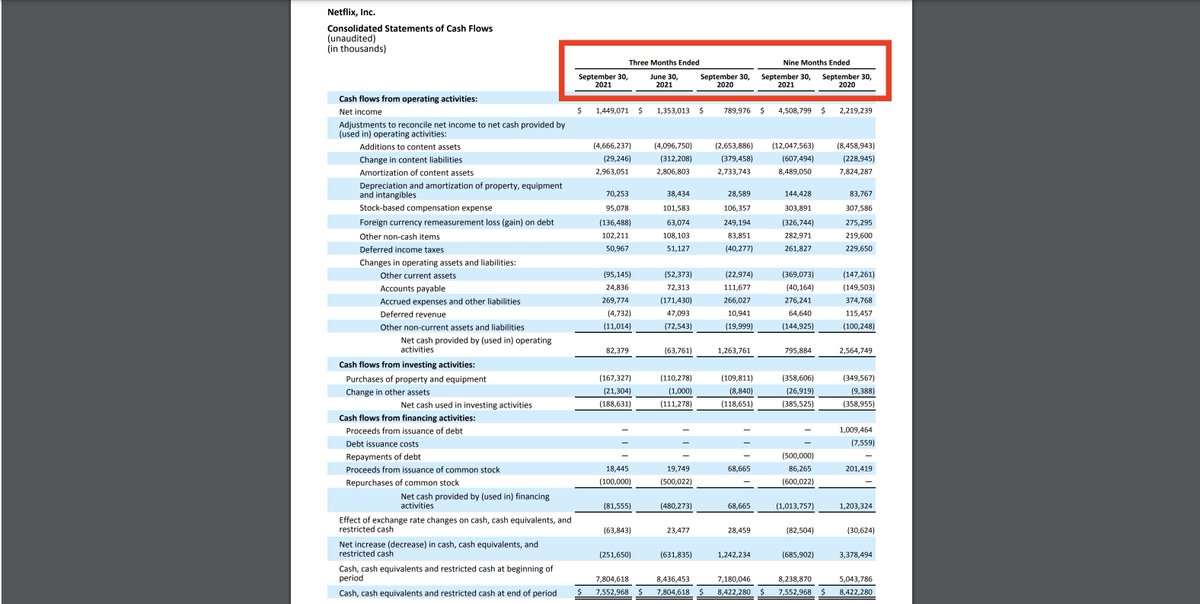
Don't just buy and hold.
Buy and continually verify.
Here are 9 red flags that indicate that your thesis might be busted:
Buy and continually verify.
Here are 9 red flags that indicate that your thesis might be busted:
1: Sudden slowdown in revenue growth
Revenue growth drives profits growth.
Profit growth drives shareholder return.
It's a yellow/red flag when a company's growth rate takes an unexpected turn for the worse (without a really good reason)
Revenue growth drives profits growth.
Profit growth drives shareholder return.
It's a yellow/red flag when a company's growth rate takes an unexpected turn for the worse (without a really good reason)
2: Big downward guidance revision
Most CEOs give conservative guidance
A sudden negative guidance revision -- or elimination of guidance altogether -- indicates that the company is struggling big time with execution
Most CEOs give conservative guidance
A sudden negative guidance revision -- or elimination of guidance altogether -- indicates that the company is struggling big time with execution
3: Huge increase in sales & marketing costs
This isn't always a bad thing, but it can indicate that demand is weaker than expected
This is especially telling when its combined with slowing sales growth
This isn't always a bad thing, but it can indicate that demand is weaker than expected
This is especially telling when its combined with slowing sales growth
4: Major acquisition
A large acquisition/merger can distract management, consume resources, dilute shareholders, hurt the balance sheet, irritate employees, and significantly change a thesis
A large acquisition/merger can distract management, consume resources, dilute shareholders, hurt the balance sheet, irritate employees, and significantly change a thesis
5: Surprise executive departure
Leadership transitions are difficult even when they are well cordinated.
If the CFO or CEO suddenly jumps ship -- or is shown the door -- it's a sign that something is wrong with the business
Leadership transitions are difficult even when they are well cordinated.
If the CFO or CEO suddenly jumps ship -- or is shown the door -- it's a sign that something is wrong with the business
6: Declining gross margin
All margins matter, but gross margin is particularly important
There are legitamate reasons for gross margins to decline -- product mix, seaonality -- but it can also indicate that a company is lowering prices to drive sales
All margins matter, but gross margin is particularly important
There are legitamate reasons for gross margins to decline -- product mix, seaonality -- but it can also indicate that a company is lowering prices to drive sales
7: Declining market share
If a competitor is growing much faster than your business -- due to a better product, better management, or better business model -- it's a sign that the businesses' moat is erroding (or being disrupted)
If a competitor is growing much faster than your business -- due to a better product, better management, or better business model -- it's a sign that the businesses' moat is erroding (or being disrupted)
8: No longer reporting key metrics
If a management team stops reporting a key metric that it historically shared -- unit volume, customer growth, churn -- it's almost always because the metric is heading in the wrong direction
If a management team stops reporting a key metric that it historically shared -- unit volume, customer growth, churn -- it's almost always because the metric is heading in the wrong direction
9: Brand dilution
If a management team puts its "premium" products in discounted channels in an effort to chase revenue growth, watch out
If a management team puts its "premium" products in discounted channels in an effort to chase revenue growth, watch out
Prefer video?
Subscribe to my YouTube channel.
@Brian_Stoffel_ & I have made 100+ videos that teach you how to invest better
youtube.com/brianferoldiyt…
Subscribe to my YouTube channel.
@Brian_Stoffel_ & I have made 100+ videos that teach you how to invest better
youtube.com/brianferoldiyt…
Summary:
1: Sudden slowdown in revenue growth
2: Big downward guidance revisions
3: Large increase in sales & marketing
4: Major acquisition
5: Surprise executive departure
6: Declining gross margin
7: Losing market share
8: No longer reporting key metrics
9: Brand dilution
1: Sudden slowdown in revenue growth
2: Big downward guidance revisions
3: Large increase in sales & marketing
4: Major acquisition
5: Surprise executive departure
6: Declining gross margin
7: Losing market share
8: No longer reporting key metrics
9: Brand dilution
• • •
Missing some Tweet in this thread? You can try to
force a refresh







